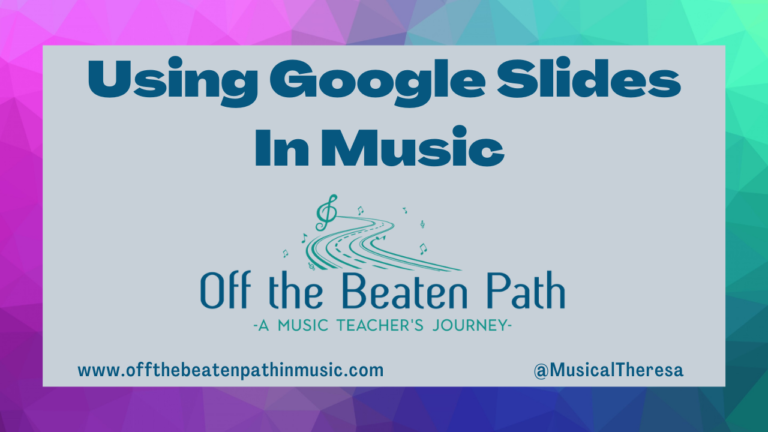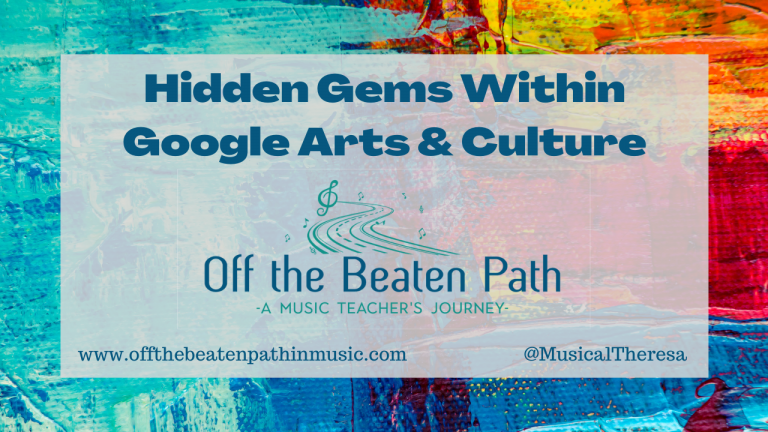Three Tech Tools to Check Out This Summer
This article was originally published in The Woman Conductor Journal, June 2021 issue.
For many, summer is a time for rest and rejuvenation. The schedule slows, the days are longer, and the commitments are less frequent. However, summer is also a great time to dig into new tech tools you may not have explored before. Or dive deeper into something where you’ve only scratched the surface. Either way, here are three tech tools worth checking out before the school year resumes.

Canva: Effective Digital Design Done Easy
Who knew that as band directors we would also need to be graphic designers? Between concert programs, flyers, and logos, there is always something that needs to be created. Canva is a one-stop-shop for all of your design needs. It offers professional-looking templates that truly take your creations to the next level.
Start by choosing a template or create something from scratch. The template library includes designs for posters, flyers, infographics, concert programs, newsletters, social media posts, videos, and much more. From there, you can customize your design with several elements such as photos, images, shapes, text, colors, and backgrounds. Using Canva’s templates gives someone with no experience in graphic design the foundation to create something that is effective and visually appealing. You can reuse designs and elements to create a consistent “brand” for your band program. Download creations as a variety of file types, making them easy to share and publish.
Canva’s free account is very robust and will work for almost all educational needs. However, Canva also offers educators teaching K-12 free use of their pro features, which include additional templates, photos, cloud storage, and branding options. Check out www.canva.com/education/ for more information.
Build Community With Kumospace
Move over, Zoom, welcome to Kumospace! Kumospace offers an immersive video experience while using spacial audio. This means users feel like they are “in” the digital space and can only talk to those “standing” closest to them! Kumospace allows groups to gather virtually and functions as if everyone were in the same physical location. Instead of being in your stationary “Brady Bunch” box, you can move your avatar around the room and engage with others as you choose. It’s easy to have a side conversation with a small group of people, while others do the same elsewhere in the room. The host can broadcast to everyone in the space, or even share their screen. Gone are the days of only one person talking at a time. Kumospace truly makes you feel like you are together.
How could we use this as band directors? Kumospace is great for building community. Gather your group virtually for socialization, team building, and more. While it can’t replicate physically being together, Kumospace is a great alternative when physical distance is necessary. You can use Kumospace for a virtual “meet the leadership” night, section gatherings, or even to create a virtual coffee shop. If we’ve learned nothing else from this pandemic, relationships are vital in what we do as music educators. Using Kumospace can help you build and grow those connections.
Kumospace is free for users. Once you have signed up for a Kumospace account, you can create up to eight rooms at a time, and each room can accommodate 30 people. Currently Kumospace is approved for users 13 years and older, though check with your school before introducing any new technology to students.
Engaging Students With Noteflight Learn
At its core, Noteflight is a cloud-based music notation tool. Users access it through a web browser and can compose music on any device. The Noteflight Learn platform enables educators to use the composition features with their students, and much more. Noteflight Learn gives educators a website that creates a “walled garden” for their students – it’s an enclosed environment where the administrator can control and view everything the students access. This is very important for compliance and digital safety. It also integrates with Google Classroom, Canvas, Schoology, and other learning management systems.
Noteflight Learn offers music educators a wide variety of tools and features to use with their students. The Noteflight editor is where you can compose, using almost any musical elements imaginable. Teachers can create assignments for students to compose their own music. Students can share musical scores with classmates to collaborate on compositions, or record themselves into a Noteflight score and save their audio track.
Using SoundCheck, students can record themselves playing and get an assessment of their performance! SoundCheck will show if notes and rhythms are played correctly. The Noteflight Learn Library contains ready-to-use exercises for music theory, composition, scales, and more. There are optional content libraries that contain digital scores of repertoire, including music for ensembles, piano, guitar, and popular music. The content libraries also contain full access to the Essential Elements method books. You can assign songs to students to practice, record in SoundCheck, or arrange using the Noteflight editor.
While the uses for Noteflight Learn are endless, here are a few favorites for band directors:
- Reinforce musical concepts by having students compose melodies that contain the elements being learned, such as a new key signature, rhythm, or form. Then, encourage students to play the melody they wrote.
- Using chorales from the Noteflight Learn Library, students can play chamber music with any combination of instruments. Use the Noteflight editor to change the instrument parts or key to meet the needs of their group.
- Offer students choice by encouraging them to learn a solo from the Pop Content Library. Students can change the solo part to match their instrument and range, and play along with the provided accompaniment.
- Have students collaborate on a score, by either creating an arrangement of an existing work or creating something original. One student could write the melody while another writes a harmony or bass line. Students can then play their composition together or record their individual parts into Noteflight.
- Use the Noteflight editor to transpose exercises in the Essential Elements book for students who need an additional challenge.For example, students could read melodies in all 12 major keys, or in various octaves.
Creativity is such an important part of a comprehensive music education, and Noteflight offers great ways to incorporate this into any band program.
Definitely use this summer to rest, reset, and recharge. You deserve it! But when you find yourself at the computer with extra time, take a few minutes to explore these tech tools and imagine the possibilities of how they can enhance your band program in the fall.



